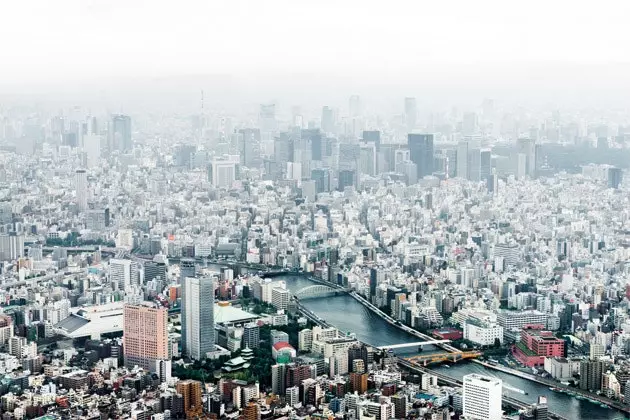
Atlas of Tokyo Customs
It's nice to come to an industrialized, modern, technological country , at the forefront of the 21st century, and may everything shock you, even the most insignificant of gestures. As far as the traveler is concerned, the main defect of this avant-garde is boredom : the grotesque homogenization of tastes, habits, colors. Just think of the airports in Hong Kong, Berlin and New York in the last century, until the 70s or 80s. Think of those airports now. A trace. Same cafes, restaurants, shops, firms.
When you land at the Tokyo airport, you go to the toilet and the toilet is a robot – an electronic device with a control panel to regulate the heating of the bowl, turn on the dryer, shoot the deodorant...–. You cannot go out to smoke in the street, in the open air, it is prohibited; it must be done indoors, in a designated space. They will tell you yes, that there is no problem, of course you can drink on the street, especially sake, we recommend the ones from Ibaraki prefecture.
In the taxi, the driver with white gloves occupies the seat on the right, English style, and the vehicle combines the highest technology – the rear door opens and closes by itself, don't try to do it on your own – with a movie set of Almodóvar in which the cross-stitch embroidery stands out to preserve the upholstery of the seats. You can't talk on the mobile phone on the train. . On the subway platforms, Tokyoites form rows as orderly as silent on sections of track where railcar doors are expected to open. And yes, that's right, there are female-only carriages marked with pink paint on the floor. The objective is to protect them from the sobones when the cars are filled to the brim, and they work only at rush hour, the rest of the day they admit passengers of both sexes. once on the street you don't find a wastebasket but you don't see papers on the floor either . You try to communicate in English but nothing, as if you were doing it in Spanish.
So when you arrive at the hotel, on an avenue where there are several bicycles sanctioned by the Police with a fine because the cyclist has parked wrong, you realize that you really are somewhere else, in another city, in another country that is not the look-alike of any other country in the industrialized world , modern, technological, at the forefront of the 21st century.
In the center of the city of Tokyo live almost 12 million inhabitants . The total of the metropolitan area is around almost 40 million, thus becoming the most populous urban agglomeration on the planet (to get an idea, it is as if we placed the entire Spanish population in a space the size of Aragon). In fact, Tokyo is not a city , is a set of 23 urban districts, surrounding cities and even islands located more than 1,000 kilometers away, the idyllic islands of Ogasawara , declared a World Heritage Site by UNESCO).
To articulate the mobility of so many people, it has the densest rail network in the world, including the metro, commuter trains and shinkansen , high-speed trains or bullet trains, as we Westerners know it, not the Japanese. The JR Yamanote circular line alone is used by more than three and a half million people every day, as if all of Madrid passed through its platforms. In fact, Tokyo, which resisted like a titan the onslaught of the March 2011 earthquake, the worst in decades, found one of the main problems of the earthquake in the collapse of its railway network. The trains stopped as a security measure and millions of people had to walk tens of kilometers to reach their homes or seek alternatives by road. The chaos.
It is worth enjoying a print: the hedonistic contemplation of the great human choreography that is formed in the stations of Shinagawa (two million daily passengers) or Shinjuk u (3.5 million) on any given working day at rush hour. It looks like a work of art , even more so if one is calmly on vacation and is aware that work emergencies and stress are alien to him, that the rush is not his.
That is the underground image of the big city. Then there's the air . The zenith plane. Since very recently Tokyo can be seen from the sky. The opening of the Tokyo Sky Tree in the Sumida neighborhood broke several records. With a height of 634 meters, it is the tallest structure on an island , and therefore of Japan, and the tallest telecommunications tower in the world . It would be necessary to place three superimposed Lollipops so that the Madrid tower with its 232 meters exceeded that height.
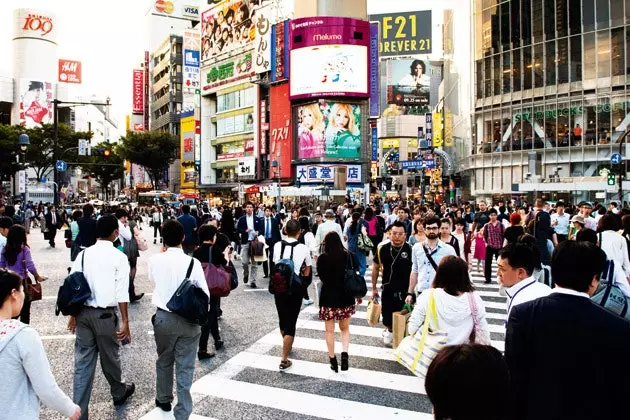
Shibuya, the busiest pedestrian crossing in the world
Tokyo Sky Tree has two viewpoints, the first at 350 meters and the second, which is accessed by an elevator that goes up at 600 m/min, the so-called Tembo Galleria, 450 meters . Tembo is a glass corridor that spirals up and hugs the tower until Sorakara Point , at 451.2 meters, the highest point a human can walk in central Tokyo , or rather about the center of Tokyo.
The feeling is that one is treading the streets of Sumida and Asakusa; that the Tokyo Metropolitan Government building, which until recently was the king of the heights of the Japanese capital, is an insignificant stick figure down there, in Shinjuku; that one can see the horizon just like the replicant in the movie Blade Runner does, up to the Tannhäuser gate and beyond, or at least, on clear days, contemplate suspended in the sky the bare breast of Mount Fuji , the natural roof of Japan.
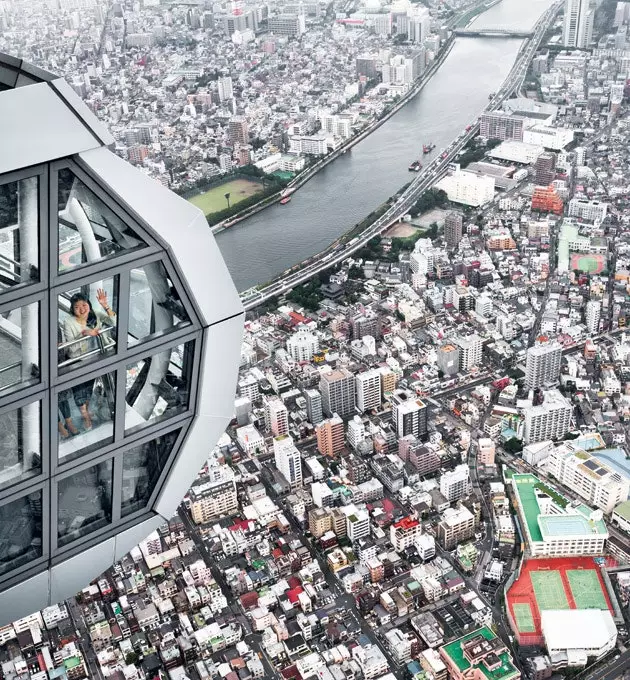
Tembo Galleria, the roof of Tokyo
After descending from the heavens, it is worth approaching Asakusa, one step away from Sumida . On the one hand, it is the neighborhood of heaven on earth: here are the asakusa jinja shrine and the amazing temple of sensoji , founded in the year 628, who knows if the oldest in the city of Tokyo. For another, It is the one of the markets, of the street stalls and the streets of artisans, such as Kappabashi Dogugai , an avenue of almost a kilometer with 170 stores of kitchenware, tableware and a repertoire of chopsticks to arm a good part of the population of the Tokyo metropolitan area.
I mentioned earlier the size and population of Greater Tokyo, urban elephantiasis, the total megalopolis: the longing for nature is such that sound recordings of the song of the nightingale are heard in the subway stations. And that there is no shortage of parks and gardens in Tokyo. For example, that of Shinjuku Gyoen , very close to the hustle and bustle of Shinjuku. Or the eastern garden of the Imperial Palace, the alternative to Ginza shops. Or the huge park Ueno Koen, opened in 1873 as Japan's first public park and home to the zoo, the Tokyo National Museum, the Kaneiji temple and the Toshogu and Yushima Tenmangu shrines.
To the north of the park, through the nineteenth-century cemetery of Yanaka, is Yanaka Ginza –next to the Nippori stop of the JR Yamanote line–, a beautiful and peaceful alley of traditional Tokyo shops which has nothing to do with the hubbub and clothing and shoe shops of popular Ameyoko, on the other side of Ueno Park.
For real fuss, Shibuya's . The fact that we arrived at a neighborhood known throughout the world for a zebra crossing speaks for itself. Yes, it is the busiest in the world, the happy convergence of six streets on the asphalt, but it is still a simple zebra crossing. Although, it would be necessary to add the neon lights, the giant television screens and the Japanese girl who meets with the statue of Hachiko to go on a spree.
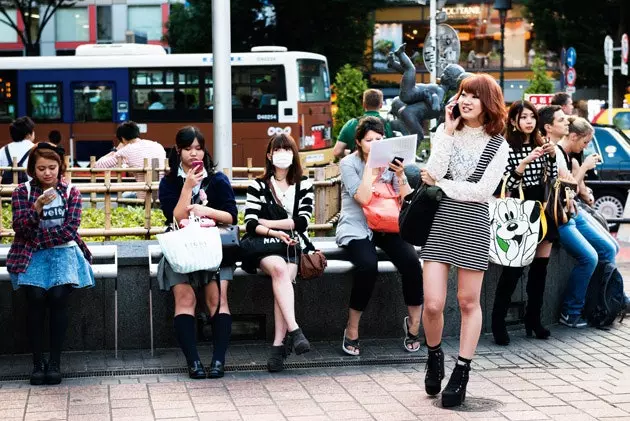
The Shibuya area is the "meeting point" par excellence
Shibuya is the neighborhood of malls, shops, bars, noise and love hotels, which rent rooms by the hour and display a decoration to stimulate the staff. There are also restaurants, many. AND izakayas, the Japanese taverns to go for tapas and drink sake . One of them hides in the basement of a hotel and her kitchen is wonderful: Bistro 35 Steps. A small establishment, with the chefs in the middle of the room and the tables distributed around their domains, with a noisy but pleasant atmosphere, which shelters you when Shibuya turns into a neighborhood-karaoke.
In Roppongi there is a Japanese restaurant that has become a myth thanks to a great fan of hamburgers, film director Quentin Tarantino . Legend has it that Tarantino shot the Kill Bill sequences in Gonpachi in which Uma Thurman slaughters a hundred yakuzas with sabers and not only does she not take off her shoes when she enters, but also leaves the tatami bloodied. The truth is that those scenes were shot in a studio in China. Also, that the Japanese are not enthusiastic about such large restaurants. Among the peasantry of Gonpachi there are many expatriates and even on the walls hangs a photo of another great meat aficionado, George W. Bush. But it is also true that you eat very well ; that Tarantino knew the restaurant and was inspired by it to shoot Kill Bill ; and that, in the private rooms on the upper floor, if you don't take off your shoes, you don't have dinner.
By the way, in restaurants when the noren (canopy) is lowered, meals are served. When the noren is collected or not, the establishment is closed. Y both sushi and sashimi can be eaten with your hands, there is no obligation to use chopsticks. The last gastronomic tip: never stick your chopsticks in a bowl of rice , it is only done in this way in the funeral offerings of the cemeteries, it is a mortuary symbol.
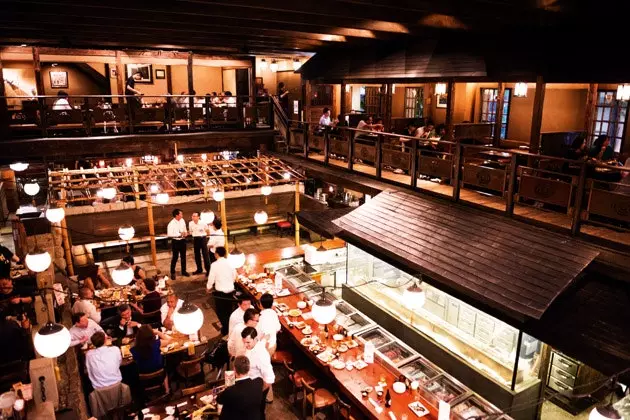
Gonpachi, the restaurant in which Tarantino was inspired
ESSENTIAL JAPANESE VOCABULARY
- Sumimasen : 'sorry, excuse me'. Voice indicated to start asking for help or order a beer in a restaurant, for example.
- Hai, wakarimasu : 'if I understand'. The first sentence my Japanese guide taught me. I don't know why, because if there's one thing I don't understand, it's Japanese.
-Oishii : 'delicious' (pronounced 'yes today') .
- Umai : It is not necessary to translate it, it is a word that indicates the state of mind: after a hard day's work, it is the first thing that a Japanese says as soon as he takes a drink of beer.
It must be stressed that if you have a date with a Japanese at 5:00 p.m., it will start at 5:00 p.m., not at 4:45 p.m. or 5:12 p.m., at 5:00 p.m. A business meeting is planned months in advance. Punctuality is not a virtue, it is not negotiable . Hourly spontaneity can indeed be a defect. Compared to the Japanese, the German checkers are Neapolitan freeloaders. The appointments to see the restaurants, hotels and museums that appear in this report were scheduled three months in advance.
Another of the most curious aspects ** is that of tips: ** they simply do not accept them. No way. It is not an offense, but neither do they accept a bonus derived from their work. Are you implying, my friend, that my work is underpaid? In Spain they are an anecdote, in the United States they are the bulk of the salary of hotel workers. That is one of the reasons why North American waiters are so helpful and at the same time reject something as traditional and Iberian as the desktop. The more tables they serve, the more tips they receive.
However, in bars, pubs and small izakaya-type restaurants in Tokyo, the custom of table charge –yes, in this case they use lingua franca–, a fee for occupying the table . Sometimes the otooshi is accompanied by a tapa or appetizer. This habit can be seen, for example, in some of the tiny bars in Golden Gai, in the rogue neighborhood of Kabukicho, in Shinjuku . They are charming and lively bars where the seat is certainly valued: they are so small that to take a picture of you the photographer has to leave the bar. A perfect example of what is called close treatment between client and owner.
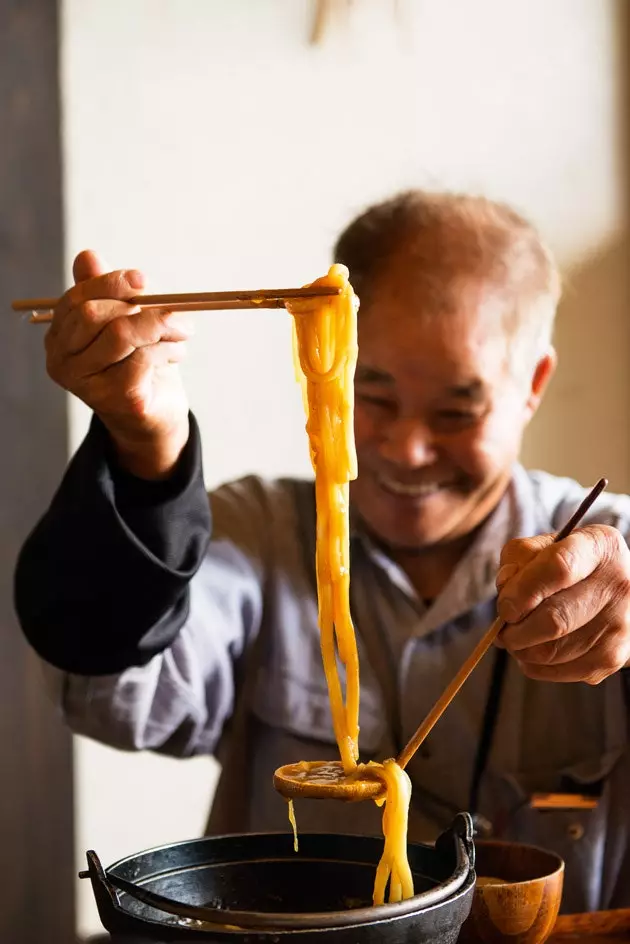
Forget tipping in Tokyo
ART IN TOKYO
Marvel at the sacred silence that reigns in the museums of Tokyo . There is a dramatic respect, a bit snobbish, with art. One of the fundamental temples is ** The National Art Center , in Roppongi **, both for its temporary exhibitions and for the continent that exhibits them, the building of the architect Kisho Kurokawa, who worked on a structure that covers 48,000 m² including galleries, special exhibition rooms, seminars, an auditorium, a restaurant and an art library. The set is more beautiful on the inside than on the outside. Despite so much deployment, photos are prohibited (and that here each citizen hides a photographer inside) .
If some guard at The National Art Center catches you with a camera at the ready attacking a Roy Lichtenstein work, as was the case, he will beg you not to do it. Yes, with that Japanese courtesy full of bows that carpets your stay in the city from minute one, because although Tokyo can boast of being the great metropolis of the developed world in which you can feel the strangest and most isolated, everything ends up resolving a bow.
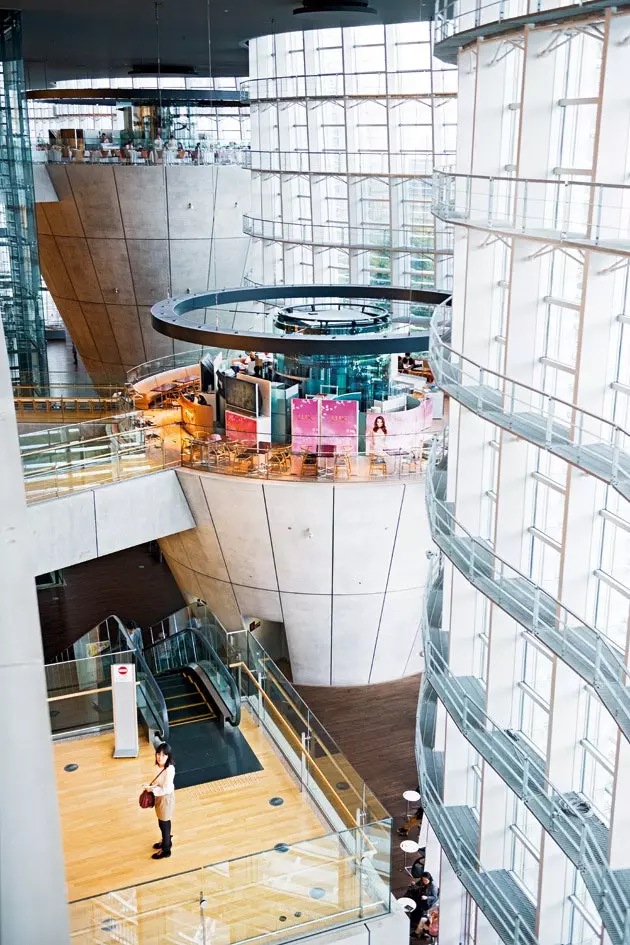
National Art Center
WHERE TO SLEEP
- Park Hyatt Tokyo : the exclusive Shinjuku hotel made popular by Sofia Coppola in lost in translation celebrates her 20th anniversary in 2014. On her website they will progressively announce the calendar of events (3-7-1-2 Nishi Shinjuku, Shinjuku-Ku).
- First Cabin Akihabara : newly opened capsule hotel in Akihabara, the electronics district. Good location, cheap, Wi-Fi even in the showers and some cabins that, in their luxury range, include pajamas, television, a table and a lockable storage room under the bed. Eye, women and men occupy different floors (101-0025 3-38, Kandasakumacho, Chiyoda-ku) .
- ** Shinagawa Prince Hotel :** a third way in Shinagawa, a practical and functional alternative to the luxury of the Park Hyatt and capsule hotels (10-30 Takanawa 4-chome, Minato-kuTokyo).
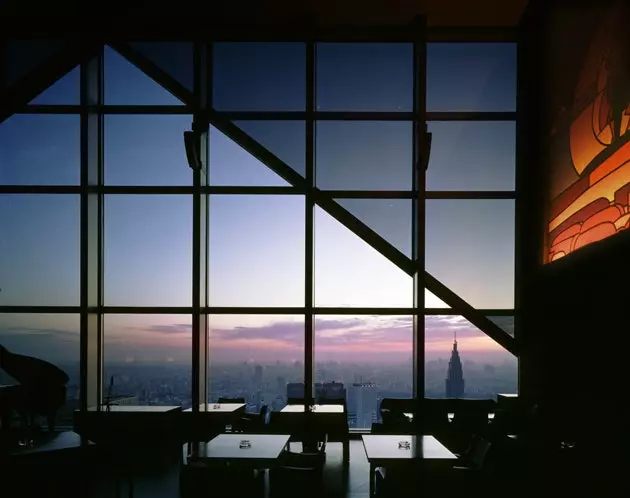
Park Hyatt Tokyo
RESTAURANT GUIDE
Some interesting restaurants, grocery stores or places a foodie would go to in Tokyo.
- ** Sant Pau Tokio :** the restaurant with a Mediterranean air led by Carme Ruscalleda (Coredo Nihonbashi Annex 1-6-1 Nihonbashi)
- Birdland : one Michelin star. Skewer kitchen. (Tsukamoto Building B1F 4-2-15 Ginza Chuo ku Tokyo) .
- Gonpachi : Very casual and cheap Japanese cuisine in a Japanese atmosphere. Scene from the movie Kill Bill (1-13-11 Nishiazabu, Minato-ku).
- Mizutani: three Michelin stars, Sushi Master (Juno Building 9F 8-7-7 Ginza Chuo ku)
- Sukiyabashi Jirou: three Michelin stars (6-12-2 Roppongi Hills Keyakizaka-dori 3F, Minato)
- Tsukiji Market : Tokyo's famous fish market. It is necessary to show up at 04:30. It is a spectacle because most of the fish is alive and is slaughtered in the presence of the buyers.
- Takashimaya Department Store Food Hall in the Ginza neighborhood. The food section of these stores is a spectacle for any fan of gastronomy.
- Kappabashi Ward : next to the Asakusa neighborhood. All kinds of kitchen related utensils for sale.
- Mandarin Bar: very elegant and chic (2-1-1 Muromachi Nihonbashi Chuo ku Tokio 37F) .
- new york bar : at the Park Hyatt hotel. Very stylish bar that was featured in the movie Lost in Translation (3-7-1-2 Nishi Shinjuku).
*** You may also be interested in...**
- Tokyo Guide
- Hotel reasons to return to Tokyo
- Emerging Food Powers: Tokyo
- The Tokyo Fish Market: a scented microcosm in danger of extinction
- This article is published in the Condé Nast Traveler magazine for February, number 70. This number _ is available in its digital version for iPad in the iTunes AppStore, and in the digital version for PC, Mac, Smartphone and iPad in the newsstand Zinio virtual (on Smartphone devices: Android, PC/Mac, Win8, WebOS, Rim, iPad) ._
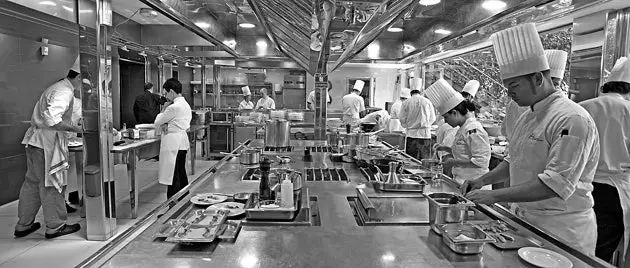
The kitchen of Sant Pau Tokyo, Ruscalleda territory
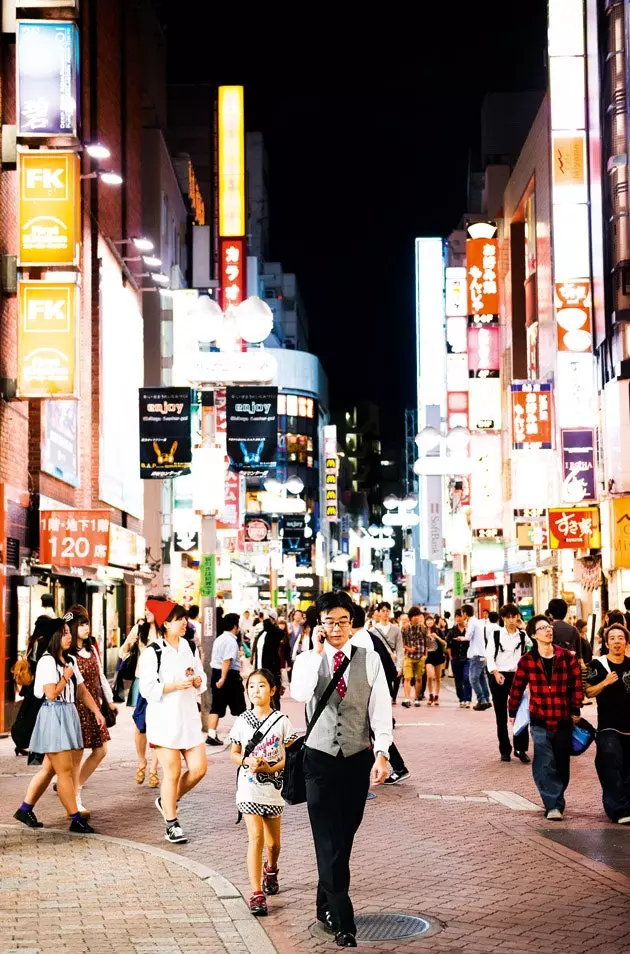
Asakusa, the neighborhood of markets and street stalls
